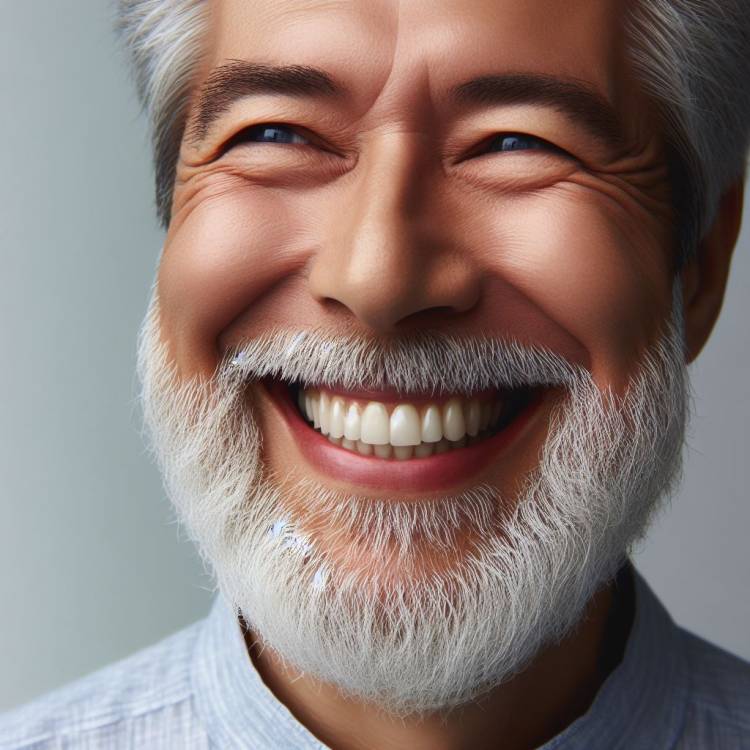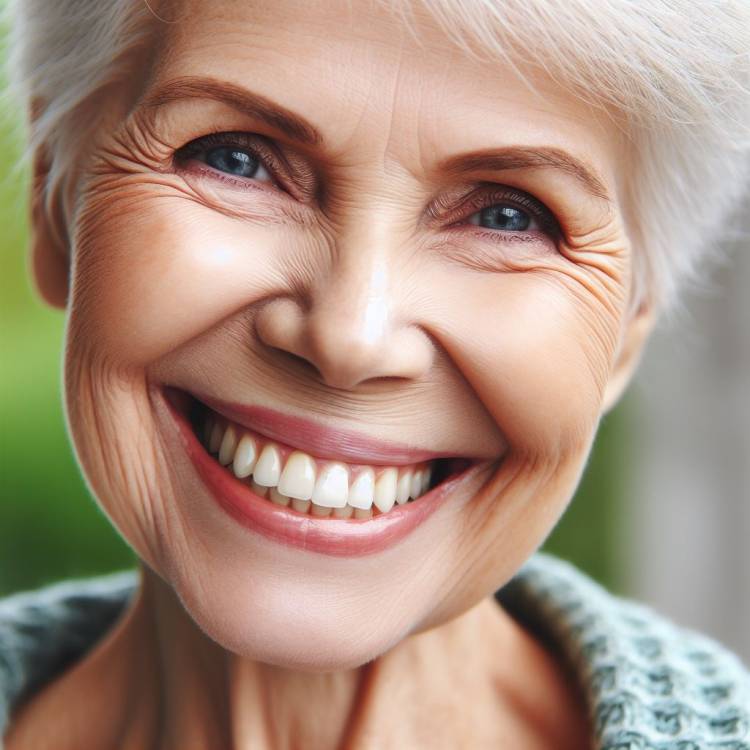
Delving deeper into the fabric of oral health-related quality of life, a noticeable gender divide emerges. Among older males, the Geriatric Oral Health Assessment Index (GOHAI) reflects a score of 26.44. In contrast, their female counterparts scored 19.72, highlighting distinctive experiences and needs.
These statistics unveil a pressing need for targeted measures to preserve gum health in later years. In this article, we dissect practical tips and insights designed specifically for older adults in India, providing a roadmap to navigate the aging process with enduring oral health.
10 Helpful Tips!
In the journey of ageing, oral health emerges as a critical element, especially for older adults. Current dental care systems, however, fall short in effectively addressing the challenges faced by the ageing population. Urgent, system-wide changes are essential, calling for a shift in focus towards holistic approaches.
1. Integration into Global Health Frameworks:
Advocates for global oral health emphasise the integration of oral diseases into existing global health governance frameworks for Non-Communicable Diseases (NCDs). Collaborating with the NCD Alliance is key, but clarity on unified requests is crucial to avoid continued neglect.
2. Reorienting Healthy Ageing Policies:
Prioritising oral health within healthy ageing policies is paramount. The “Health in All Policies” concept provides a suitable framework, fostering collaborative national governance and recognizing the interdependence of health with other sectors.
3. Embracing Integrated Care:
Leveraging the Integrated Care for Older People (ICOPE) guidelines offers a proactive vision for monitoring health changes in older adults. Embedding oral health services within integrated health systems contributes to achieving universal health coverage.
4. Establishing Multidisciplinary Teams:
Creating multidisciplinary teams within all health settings is practical and beneficial. Integrating oral health-care providers into aged care teams, especially in primary care, enhances overall health outcomes through collaborative efforts.
5. Shifting to Prevention-Based Care:
The current expensive, interventionist model of dental care needs radical reform. Shifting towards a prevention-based system, addressing various determinants like behaviour, social factors, nutrition, and the environment, is imperative.
6. Universal Health Coverage for Oral Health:
Global oral health inequality is a universal burden, particularly in low-income and middle-income countries. Advocating for the inclusion of oral health services within Universal Health Coverage (UHC) frameworks is a high priority, as demonstrated by successful models in countries like Brazil, Thailand, and Japan.
7. Task Shifting and Sharing:
In low-income countries, task shifting and sharing are vital components of UHC models. Contextually appropriate strategies that utilize the available workforce, skills, and policies contribute to bridging healthcare gaps.
8. Upstream Action and Common Risk Factor Approach:
Prioritising strategic upstream action through a common risk factor approach is crucial for disease prevention. A stronger international movement is needed to implement this strategy across various interdependent health policies.
9. Empowering Caregivers and Volunteers:
Engaging caregivers and volunteers through enhanced education programs can deliver daily oral care in aged care settings. Empowerment-focused training for healthcare providers ensures a positive change in their behaviours towards oral health.
10. Positioning Oral Health as Intrinsic to Well-being:
Beyond a matter of social justice, oral health is intrinsically linked to overall health, particularly in older adults. As we envision healthy ageing, recognizing the centrality of oral health becomes imperative. The recent WHO resolution on oral health underscores its importance in the broader health agenda.

Oral health in older adults matters!
Expanded Definition of Oral Health:
In 2016, the World Dental Federation broadened the definition of oral health beyond just disease. It now includes various aspects like speaking, smiling, tasting, and chewing without pain. So, it’s not just about avoiding dental problems but ensuring overall well-being.
Impact of Oral Health on Quality of Life:
Poor oral health, including issues like missing teeth or uncomfortable dentures, can lead to oral pain and infections. This directly affects daily activities like eating, speaking, and even expressing emotions through facial expressions, impacting overall quality of life.
Decline in Oral Health in Residential Settings:
Older adults often experience a rapid decline in oral health when they move to residential care settings. This decline can be due to factors like dry mouth, fewer functional teeth, and challenges in self-care, leading to discomfort and even appetite loss.
Oral Health as a Predictor of Frailty:
There’s a concept called “oral frailty” where poor oral health is seen as both a predictor and a marker for frailty in older adults. This highlights the importance of maintaining good oral health as a proactive measure to prevent malnutrition.
Link Between Oral and General Health:
Oral diseases and major non-communicable diseases share common risk factors like tobacco use and poor diet. The primary cause of many oral conditions is dental plaque, which, if not removed regularly, can lead to systemic health issues affecting various organs.
Association with Chronic Inflammatory Diseases:
Periodontitis, a severe form of gum disease, is linked to common chronic inflammatory diseases of aging. For instance, there’s a clear bidirectional link between type 2 diabetes and periodontitis. Managing oral health can positively impact blood glucose control.
Oral Health and Respiratory Health:
Poor oral health can lead to aspiration pneumonia, especially in older people with swallowing difficulties. Improving oral care significantly reduces the risk of pneumonia, emphasising the importance of good oral health practices.
Oral Health and Cardiovascular Disease:
There’s evidence supporting the association between cardiovascular disease and oral health. Periodontal therapy has shown reductions in markers of atherosclerosis, emphasising the interconnectedness of oral and general health.
Challenges in Access to Oral Care:
Older adults, especially those in residential care, often face challenges in accessing dental care. This can lead to poor standards of oral care and difficulties in receiving timely dental treatments.
Economic Impact of Oral Diseases:
Oral diseases impose a significant financial burden globally. However, investing in improving oral health, as seen in programs like Mouth Care Matters and Senior Smiles, can lead to substantial cost savings and overall health benefits.
Challenges for oral health in ageing populations
Historical Neglect of Oral Health:
Oral health has been a shadowed dimension in global health for an extended period. It has been somewhat isolated from general healthcare policies, resulting in oral health not receiving the priority it deserves. This isolation has implications for the well-being of older adults as they face unique oral health challenges.
A Demographic Shift:
The global population is aging rapidly, with projections indicating a substantial increase in the number of individuals aged 65 and older by the year 2100. This demographic shift poses a critical juncture for oral health, as older adults may experience specific dental issues that require targeted attention.
Preventable Oral Diseases:
Despite the preventable nature of most oral diseases, the global prevalence of conditions such as edentulousness, severe periodontitis, and untreated dental caries remains unacceptably high. These conditions contribute significantly to disability-adjusted life years (DALYs), indicating a loss of healthy years due to oral health issues.
Global Disparities in Oral Health:
Oral health challenges are not uniform across the globe. Factors such as income levels, access to healthcare, and lifestyle choices contribute to disparities in the prevalence of oral diseases. For instance, middle-income countries may experience higher rates of dental caries due to changes in social, economic, and commercial factors.
Specific Challenges for Older Adults:
Aging is associated with a higher susceptibility to certain oral health issues. Periodontal disease, oral cancer, and edentulousness become more prevalent in older age groups, creating unique challenges that demand targeted interventions.
Risk Factors and Behavioral Patterns:
The risk factors for oral diseases among older adults, including tobacco use, excessive alcohol consumption, and low socioeconomic status, have a widespread global distribution. The continued prevalence of tobacco use and changes in alcohol consumption patterns contribute to the persistence of oral health challenges in ageing populations.
Inequalities in Access to Dental Care:
Access to dental care is not uniform, with wealthier individuals and those in urban areas having better access to services. This inequality in access exacerbates disparities in oral health outcomes, with implications for the overall health and well-being of older adults.
Consequences of Tooth Loss:
The impact of tooth loss extends beyond aesthetics. Nutrition and overall quality of life are profoundly affected, as individuals with missing teeth may face challenges in eating comfortably and enjoying a high quality of life.
To Sum Up!
In conclusion, these tips offer a road map for older adults to age gracefully, preserving their gum health and enhancing the quality of life in later years.
Addressing the challenges for oral health in ageing populations requires a comprehensive and proactive approach. This involves acknowledging the historical neglect of oral health, recognizing the specific challenges faced by older adults, and implementing policies that promote preventive measures, equitable access to dental care, and overall well-being for individuals as they age. A paradigm shift in the perception of oral health is crucial for the successful realisation of the UN Decade of Healthy Aging.
Taking care of oral health is a crucial aspect of ageing gracefully. It’s not just about having a nice smile; it’s about maintaining overall well-being and preventing various health issues that can arise from neglecting oral health.
FAQs
Why is oral health important for older adults?
Maintaining good oral health is crucial for overall well-being in older adults. It contributes to proper nutrition, quality of life, and can prevent various health issues.
2. What are common oral health problems in older adults?
Common issues include tooth loss, gum disease, and oral cancers. Older adults may also face challenges like dry mouth and difficulties in maintaining oral hygiene.
3. How prevalent are oral health problems in the elderly population?
Studies show a significant percentage of older adults face oral health challenges, with a considerable portion being unaware of existing problems.
4. Are emergency dental treatments common among older adults?
Yes, emergency treatments are needed for a substantial percentage of the older population, emphasising the urgency for better oral health care.
5. How does oral health affect the quality of life for older adults?
Poor oral health can lead to pain, infections, and difficulties in daily activities like eating and speaking, significantly impacting the overall quality of life.
6. What is the Geriatric Oral Health Assessment Index (GOHAI) and why is it relevant?
GOHAI is a tool to assess oral health-related quality of life. Gender differences in GOHAI scores highlight distinct experiences and needs between older males and females.
7. How can global health frameworks address oral health in older adults?
Advocates propose integrating oral diseases into global health governance frameworks for Non-Communicable Diseases (NCDs), fostering collaboration with organisations like the NCD Alliance.
8. What role does prevention play in oral health for older adults?
Shifting from an interventionist to a prevention-based system is crucial. Prevention involves addressing behavioural, social, nutritional, economic, and environmental factors.
9. How can oral health be integrated into healthy ageing policies?
The “Health in All Policies” concept provides a framework to embed oral health, recognizing its interdependence with other sectors and encouraging collaborative national governance.
10. Is there a global initiative for oral health in ageing populations?
Yes, the Integrated Care for Older People (ICOPE) guidelines provide a proactive approach to care. These guidelines can be leveraged to support national policies on healthy ageing, incorporating oral health services.
PRISTINE SMILES DENTAL CARE JUHU
1, Jayanti Niwas, opp. Vaishali Hotel, near Iskcon Temple, Jukarwadi, Juhu, Mumbai, Maharashtra 400049

